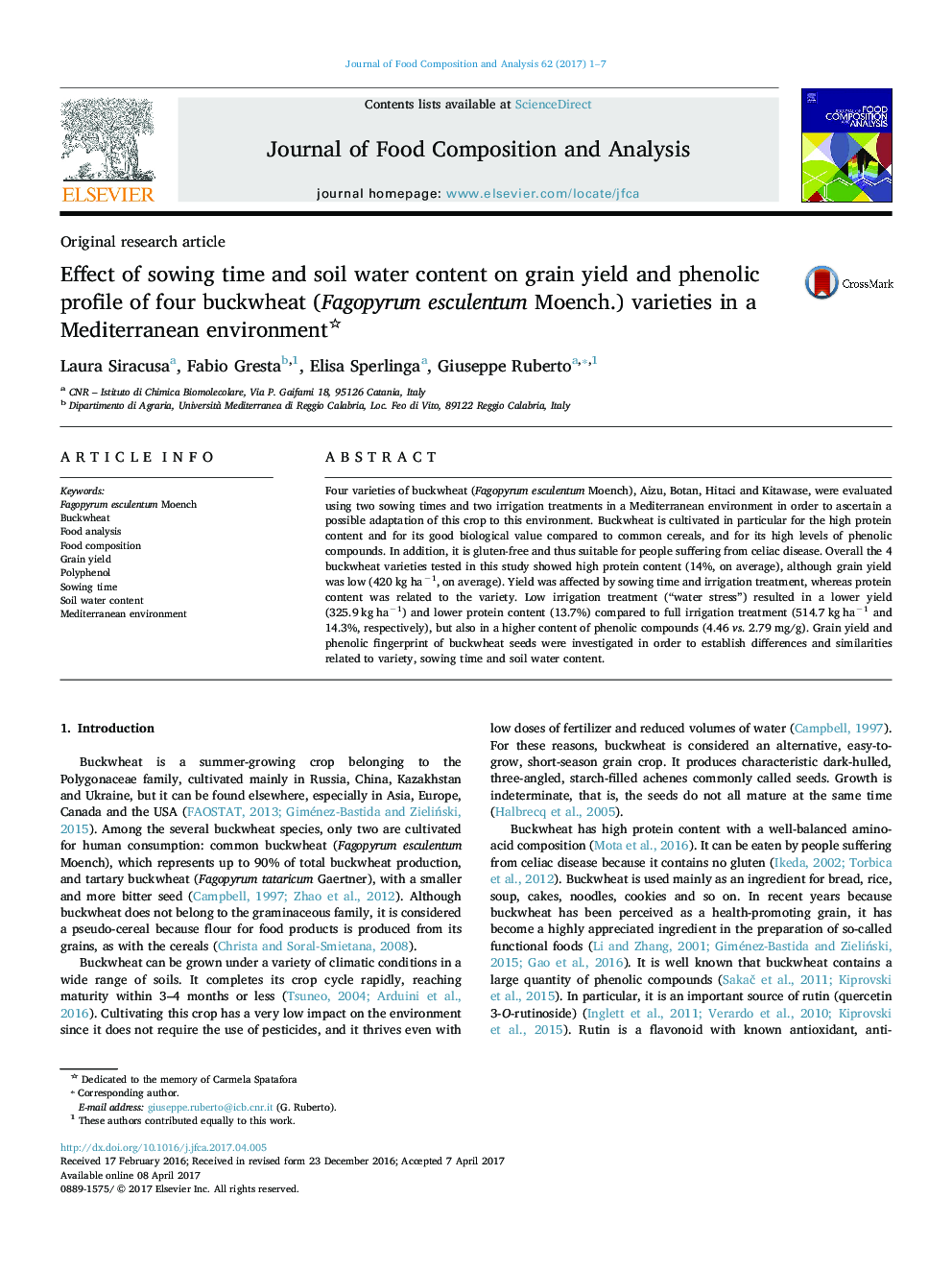| کد مقاله | کد نشریه | سال انتشار | مقاله انگلیسی | نسخه تمام متن |
|---|---|---|---|---|
| 5136853 | 1494480 | 2017 | 7 صفحه PDF | دانلود رایگان |

- Polyphenol content and proportion were influenced by variety and irrigation treatment.
- Rutin was the main compound in buckwheat seeds extract.
- Morphological traits were strongly affected by the factors studied.
- Water stress increased phenolic compounds and reduced yield and protein content.
- Buckwheat showed a potential health-promoting effect for its phenolic content.
Four varieties of buckwheat (Fagopyrum esculentum Moench), Aizu, Botan, Hitaci and Kitawase, were evaluated using two sowing times and two irrigation treatments in a Mediterranean environment in order to ascertain a possible adaptation of this crop to this environment. Buckwheat is cultivated in particular for the high protein content and for its good biological value compared to common cereals, and for its high levels of phenolic compounds. In addition, it is gluten-free and thus suitable for people suffering from celiac disease. Overall the 4 buckwheat varieties tested in this study showed high protein content (14%, on average), although grain yield was low (420 kg haâ1, on average). Yield was affected by sowing time and irrigation treatment, whereas protein content was related to the variety. Low irrigation treatment (“water stress”) resulted in a lower yield (325.9 kg haâ1) and lower protein content (13.7%) compared to full irrigation treatment (514.7 kg haâ1 and 14.3%, respectively), but also in a higher content of phenolic compounds (4.46 vs. 2.79 mg/g). Grain yield and phenolic fingerprint of buckwheat seeds were investigated in order to establish differences and similarities related to variety, sowing time and soil water content.
Journal: Journal of Food Composition and Analysis - Volume 62, September 2017, Pages 1-7